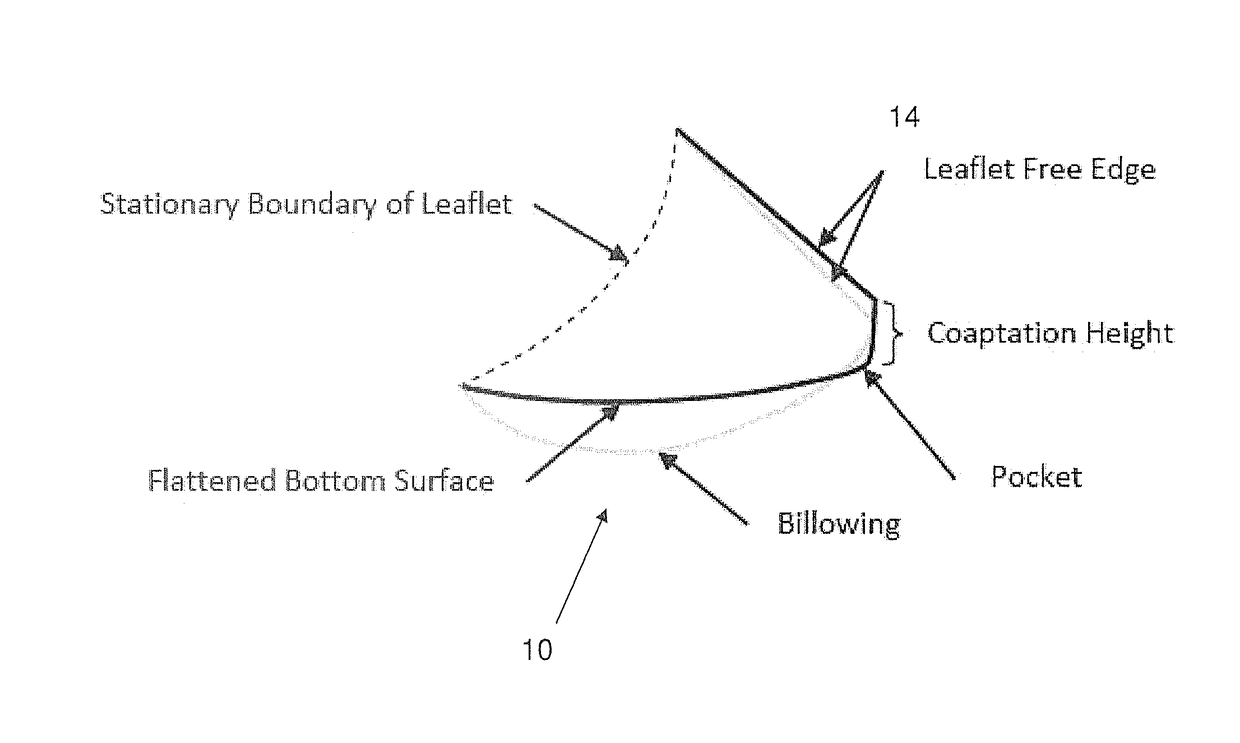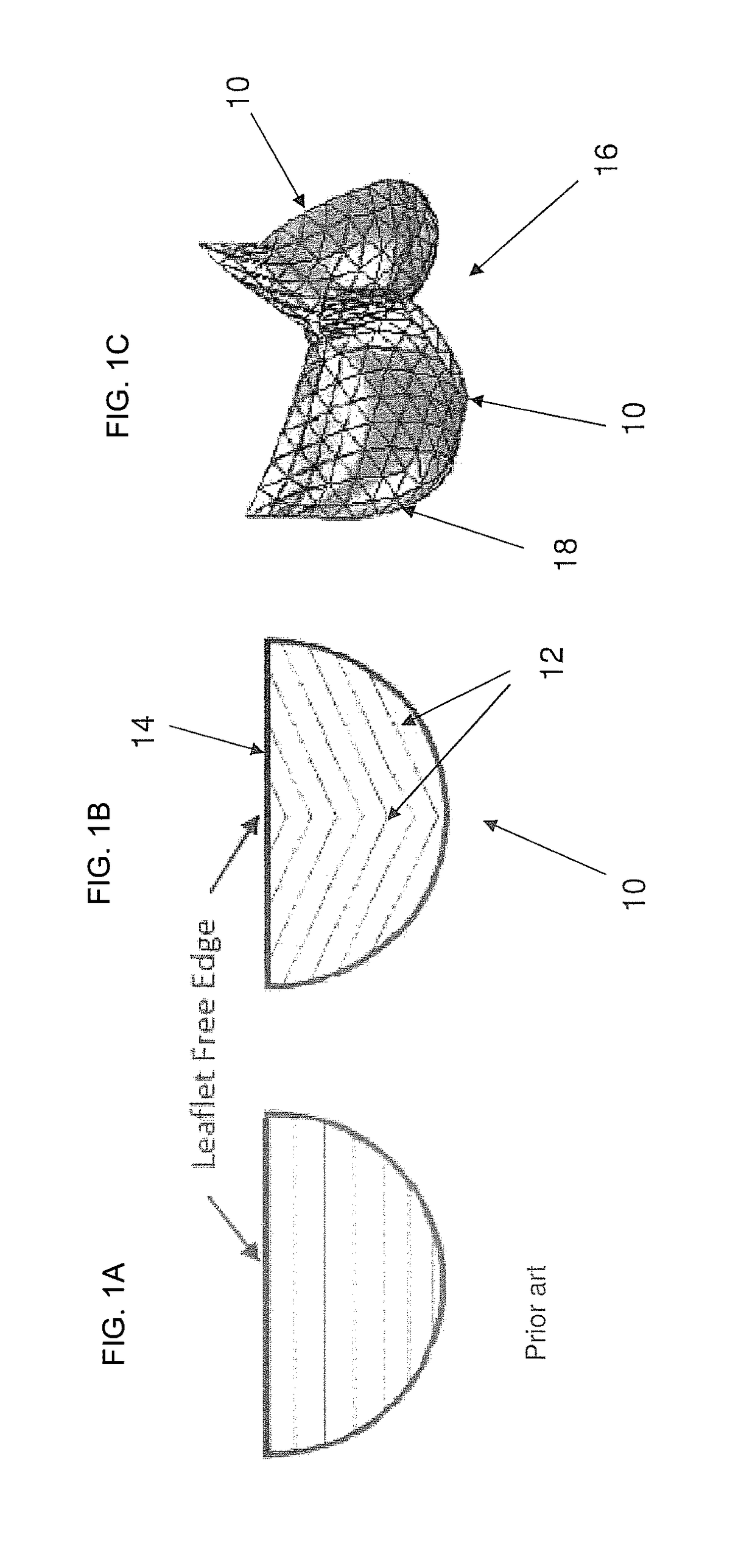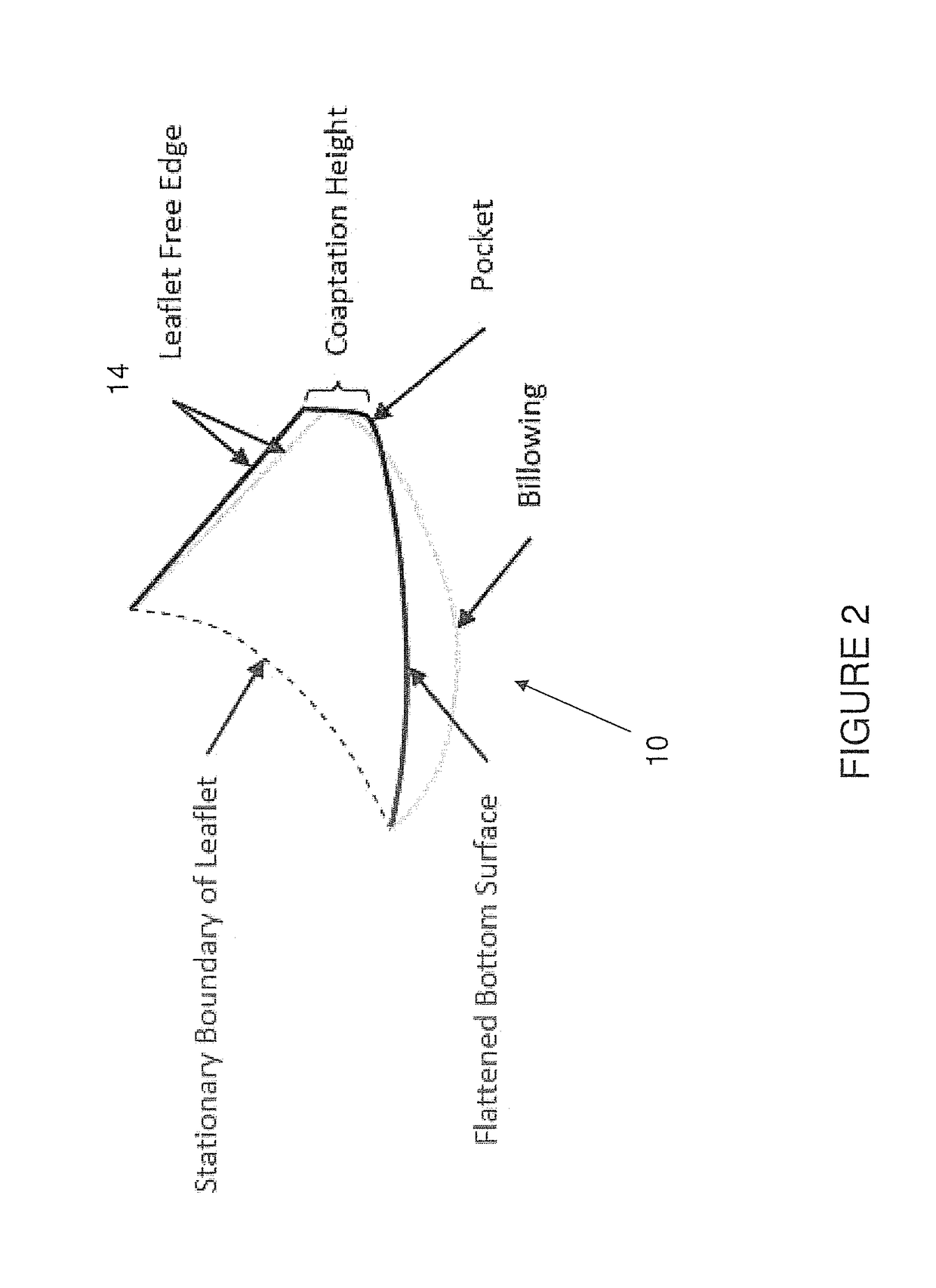Curved fiber arrangement for prosthetic heart valves
a heart valve and fiber arrangement technology, applied in the field of heart valves, can solve the problems of native valves not being compensated, heart failure, end stage heart failure and ultimately death,
- Summary
- Abstract
- Description
- Claims
- Application Information
AI Technical Summary
Benefits of technology
Problems solved by technology
Method used
Image
Examples
example 1
[0050]Aortic valve leaflets are known to exhibit anisotropic mechanical response due to collagen fibers running in a preferred direction. Prosthetic valves and leaflet grafts for valve repair often incorporate leaflet materials with such reinforcement fibers for their load-bearing effects. It was hypothesized that important features of a closed, loaded valve can be controlled by varying global patterns of reinforcement fibers, and a finite element model of the aortic valve was used to study the effect of different fiber patterns on valve coaption and leaflet stress.
[0051]Materials and Methods
[0052]A dynamic finite element model of the aortic valve was used that incorporates a nonlinear anistropic constitutive law for the leaflet material. Three different leaflet fiber patterns were modeled: (1) a pattern of straight fibers parallel to the leaflet free edge (FIG. 4A), (2) a pattern of concave-up fibers opening toward the free edge (FIG. 4B), and (3) a spatially varying pattern with c...
PUM
 Login to View More
Login to View More Abstract
Description
Claims
Application Information
 Login to View More
Login to View More - R&D
- Intellectual Property
- Life Sciences
- Materials
- Tech Scout
- Unparalleled Data Quality
- Higher Quality Content
- 60% Fewer Hallucinations
Browse by: Latest US Patents, China's latest patents, Technical Efficacy Thesaurus, Application Domain, Technology Topic, Popular Technical Reports.
© 2025 PatSnap. All rights reserved.Legal|Privacy policy|Modern Slavery Act Transparency Statement|Sitemap|About US| Contact US: help@patsnap.com



